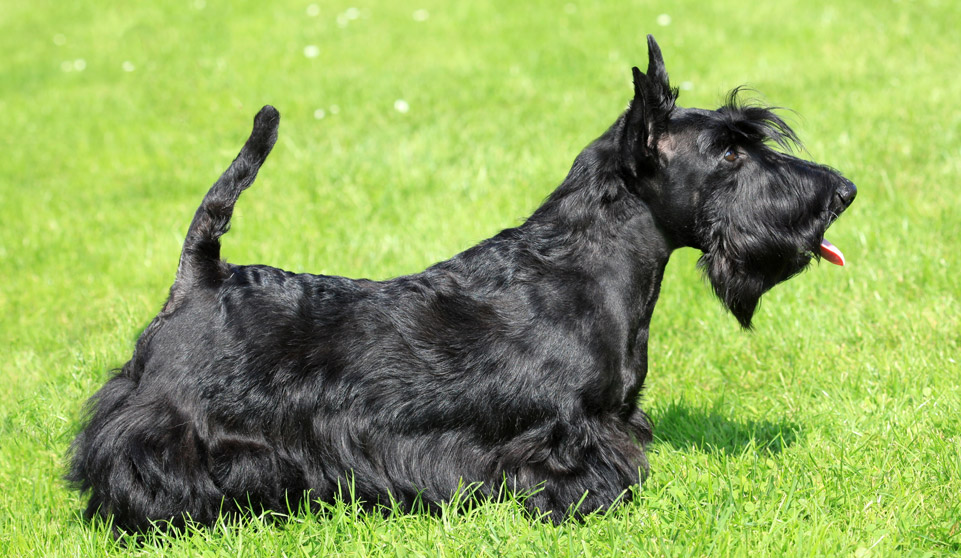Scottish Terrier Information

History
The Scottish Terrier (also known as the Aberdeen Terrier), popularly called the Scottie, originated in Scotland.
The actual origin of a breed as old as the Scottish Terrier is obscure and undocumented. Scotties were originally bred to hunt and kill vermin on farms and to hunt badgers and foxes in the highlands of Scotland.
By 1936, Scotties were the third most popular breed in the United States. Although they did not permanently stay in fashion, they continue to enjoy a steady popularity with a large segment of dog owners across the world.
Characteristics
- Playful
- Intelligent
- Lives 11-13 years
Scottish Terrier Temperament & Size
A Scottish Terrier is a small but resilient terrier with a muscular body and neck, they are short-legged and sturdily built.
The Scottie should have large paws adapted for digging. Erect ears and tail are salient features of the breed. Their eyes are small, bright and dark brown or nearly black in colour.
The Scottie typically has a hard, wiry, long, weather-resistant outer coat and a soft dense under coat. The coat colours range from dark gray to jet black.
Scotties are territorial, alert, quick moving and feisty, perhaps even more so than other terrier breeds.
The breed is known to be independent and self-assured, playful, intelligent and has been nicknamed the ‘Diehard’ because of its rugged nature and endless determination.
They have been described as a fearless breed that may be aggressive around other dogs unless introduced at an early age.
Scottish Terrier Life Span & Health Problems
This breed has a lifespan of 11-13 years.
Illness with increased prevalence in this breed are;
- Cancer – Scottish Terriers have a greater chance of developing some cancers than other purebreds. Research has suggested that Scottish Terriers are 20 times more likely to get bladder cancer than other breeds.
- Scottie cramp – A hereditary disorder which inhibits the dog’s ability to walk. The front legs are pushed out to the side, the back arches and the rear legs overflex, causing the dog to fall.
- Craniomandibular osteopathy- Also known as “Lion Jaw”, “Westy Jaw” or “Scotty Jaw”. This is caused by excessive bone growth in the bottom jaw, usually occurring between four to seven months of age.
- Von Willebrand’s disease – A hereditary bleeding disorder found in both dogs and humans. It is caused by a lack of von Willebrand factor which plays a role in the clotting process of blood.
